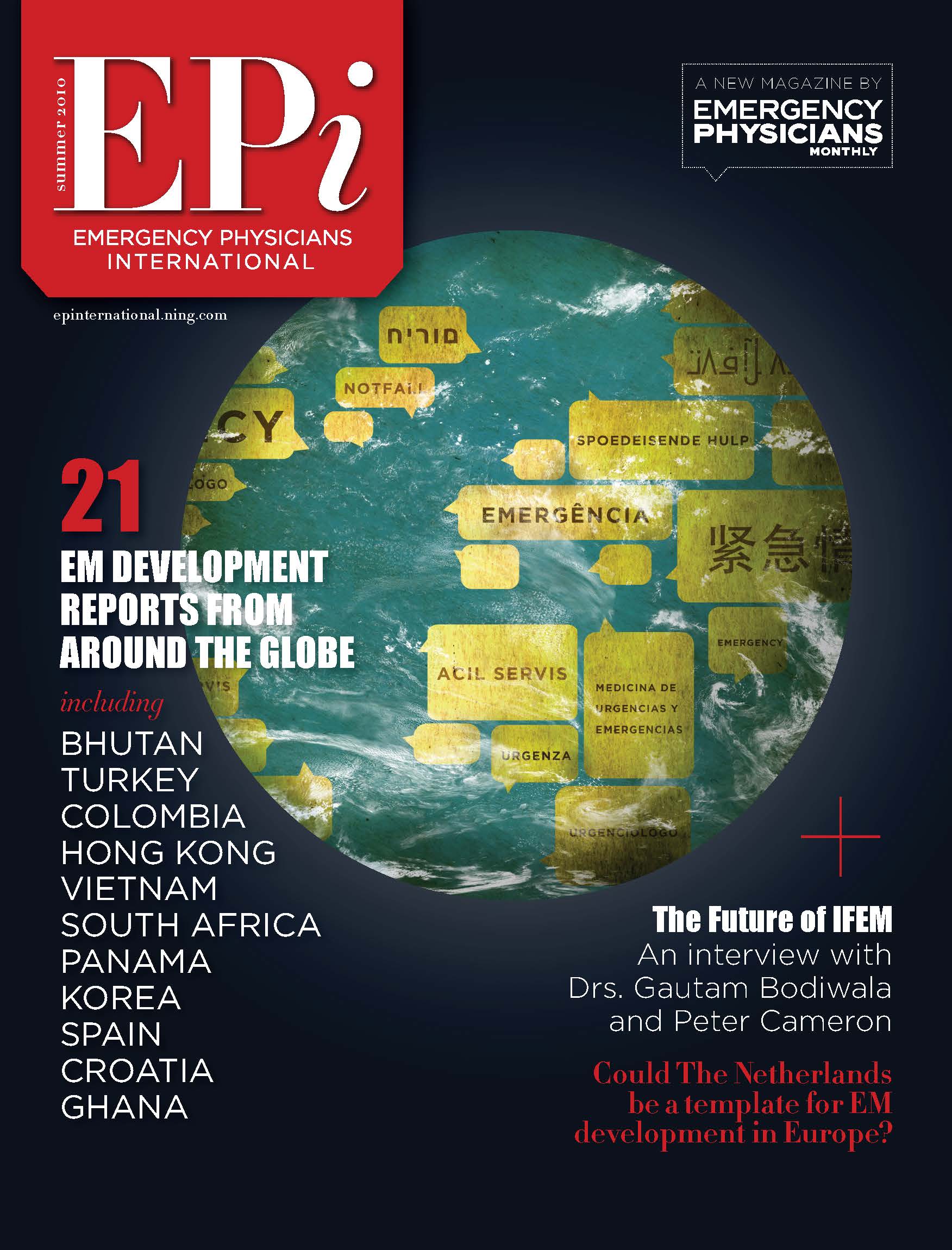Taking Emergency Medicine CME Courses Virtual During and Post-Covid
An interview with Dr. Jonathan Edlow, Professor, Medicine & Emergency Medicine, Harvard Medical School
What is your experience with hosting CME courses in the US and internationally?
As a part of our mission to promote excellence in emergency medicine education, the BIDMC Department of Emergency Medicine (EM) has held in-person CME courses for many years, both in collaboration with Harvard Medical School and independently as a department. In addition to holding courses in Boston for primarily US clinicians, we have historically offered a variety of courses in Europe throughout the years. Most recently, we held our ED Clinical Quality Improvement Professional Certification course in Florence, Italy in 2019. Having the opportunity to meet and exchange ideas with international EM colleagues has always been important to us, especially in terms of building networks for joint research and educational collaborations. Exchanging ideas and experiences from a variety of clinical contexts helps all of us expand our knowledge base as clinicians.
Have your CME courses always been virtual? If not, why did you choose to convert to virtual instead of postponing?
We have always offered in-person courses. With the arrival of the Covid19 pandemic came the need to cancel our 2020 CME courses in Boston and in Europe. Not knowing how long the pandemic would last, knowing how important teaching opportunities are for our attendings and how valued the international exchanges are for our clinicians, we decided to offer these courses virtually. It was a whole new experience for us. We had to quickly pivot, exploring new technologies, teaching styles, and course logistics.
How much did your teaching styles and course formats have to change?
There are so many benefits to in-person courses, especially the interactivity and networking opportunities. We had to ask ourselves, how do you make lecture-based courses interactive in a virtual environment? We wanted to avoid having participants simply sit in front of a computer for 6-8 hours. We also had to rethink how small group workshops would work in a virtual setting.
In the end, for our lecture-based courses, we incorporated interactive polls and quizzes throughout the lecture to keep participants’ attention. We used written Q&A and chat features on our platform to carry on conversations throughout our lectures with participants, allowing us to speak informally as we would during a live Q&A session. We also tried to incorporate video and engaging content to keep participants interested. We used case-based scenarios as a teaching style, encouraging participants to engage with us by suggesting clinical next steps.
In terms of small group workshops, we were surprised to learn that we could almost replicate the in-person experience by using technology that allowed users to break into small groups and share screens to complete assignments. Our facilitators were able to move between small groups to offer assistance, as we would in a live course. We debriefed our workshops with the full group and had participants present their work, all virtually. We were pleasantly surprised that all this could happen online, and fairly easily, maintaining an interactive experience.
Do you feel the virtual experience is less personal?
Yes, it can be. We wanted to make sure that participants, even in a virtual environment, have that feeling of “being taken care of” by our staff and teachers, which is easy to do during an in-person course. To solve this potential issue, we’ve created online course platforms for each course. Participants use these platforms to access the live course, contact our staff, and access pre-assigned work, such as video lectures and reading materials. Research articles, copies of presentations and other resources are also available on the platform. We found that this solution, this base, this virtual hub, helped participants feel they were attending a course rather than just simply accessing online content.
What does educational accessibility mean to you in the pandemic?
I think educational accessibility has always been important, and it has been only highlighted during the pandemic. The pandemic forced us all to think outside of the box on how to deliver education virtually – in terms of technology and education methods. It has become obvious to us that virtual courses allow many more people to access education -- people who may not have the time or financial resources to travel to in-person courses. We have seen, through our monthly emergency medicine webinars and our virtual CME courses, that we now have attendance from a wider variety and number of countries – and from some countries that we have never seen represented in our attendee base. Our webinars see participants from 40+ countries and our paid CME courses from 25+ countries. I think that the international exchange is extremely beneficial to us and to the attendees – and makes the conversations much more engaging.
We see our free monthly emergency medicine webinar series as a way of reaching out to EM physicians around the world, including those working in remote areas or in unsupportive hospital environments. Coming from a well-funded academic medical center, our clinicians have the opportunity to dedicate time to research and develop specialties in specific EM clinical areas. Sharing this knowledge is part of our mission. In addition, feedback from international clinicians helps us further develop our specialty area.
Of the changes made necessary by the pandemic, what do you think will last in future programming? What is the long-term impact this year will have on medical educational development?
We think hybrid courses will be the way forward. By that, I mean that we will offer live, in-person courses for those who can travel: however, those courses will be also offered virtually for those who cannot attend for financial or logistical reasons. We’ll have to be creative in creating networking and interaction opportunities for both the live and virtual attendees and make sure the virtual attendees are not simply watching the event, but are actively participating through interactive video, polling, education gamification, etc. The real concern for us at this time is making sure that both the virtual and live participants have similarly positive and engaging experiences - and adjusting our teaching style to make this happen. We are currently working on techniques that will enable us to teach effectively to two different types of audiences, and this may ultimately mean holding live and virtual events consecutively rather than concurrently, to ensure optimum learning to both groups. I think all-virtual courses will also continue going forward, especially for our CME courses, as the reduced operations cost allows us to offer these courses at a more accessible price.
How do you measure an event’s success differently in-person vs virtually? How successful do you think these courses are?
It all comes down to participant feedback. We have extensive feedback forms for both our in-person and virtual courses. They help make our courses better each year. We will continue to look to participant feedback and suggestions on the best way to move forward. I also think the amount of questions and interactions received during a course are an indicator of course success and engagement – our participants were very engaged in our recent virtual courses so I see that as an indicator of success. With our QA course, we also saw a lot of participants posting about their positive experiences on social media after the course, which I also consider another positive metric of success.
What do you hope for the future of your courses?
We had a number of requests for a Cardiac Emergencies course, so we’re planning on holding one virtually in October 2021, and I think both US and international physicians will find it very interesting. We’ll be discussing patient care strategies and innovative technologies for the management of cardiac and vascular emergencies.
Our annual Boston-based Neurological Emergencies course, offered in partnership with Harvard Medical School, will be held in November 2021, in either virtual or hybrid format.
We are planning to offer live or hybrid versions of two of our courses in May 2022 in Florence, Italy – The Emergency Department Quality Improvement Professional Certification course (EQuIP) and the Neurological Emergencies course.
And, of course, we will continue to hold our monthly emergency medicine webinar series on relevant EM topics.
How do you ensure your courses are accessible to participants working in all kinds of environments and with different skill levels?
First, the majority of people attending our courses are practicing emergency physicians, and so we all have a very similar knowledge basis. In terms of level or difficulty of content, there are no real access issues there. However, we have realized that, when you have participants from 45+ countries, working in different environments, with differently funded resourced hospitals, it is important to tailor your clinical recommendations to a variety of clinical settings. We need to make sure we always include clinical solutions for under resources settings. For example, using a portable ultrasound to estimate intracranial pressure in a place without other means of measuring it, or even looking for venous pulsations with an ophthalmoscope can be helpful.
Your most recent course was the Emergency Department Quality Improvement Professional Certification course (EQuIP). What is this course about? Why does it matter in emergency medicine?
Within our department, we have an Institute for Emergency Department Clinical Quality Improvement and its mission is to promote excellence in emergency department operations, clinical quality, and patient safety through a commitment to quality improvement, clinical education, international collaboration, and research.
The institute hosts many of our CME courses, and also offers the EQuIP certification course. This course is an 18-hour intensive professional development course for emergency medicine clinicians focused on the administrative aspects of quality assurance within the ED.
Why does it matter? Clinical quality happens at the level of the clinician-patient interaction. Physicians are ultimately responsible for obtaining high levels of clinical quality for the benefit of our patients, albeit with the support of hospital systems, protocols, and clinical pathways. I feel strongly that emergency physicians need to be involved in designing the QA systems within the ED. At this point, there is not an abundance of QA courses and resources available to physicians, so we created this course to expand our collective knowledge base. We designed this course to deliver a baseline of ED quality assurance knowledge and skills so that, going forward, emergency clinicians can promote and practice agreed-upon standards and encourage hospital-wide acceptance of the importance of tracking quality metrics within the ED and throughout the hospital.







